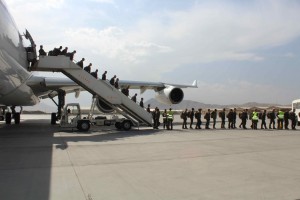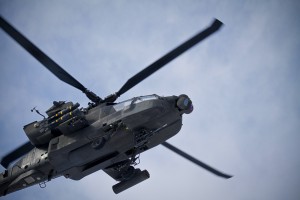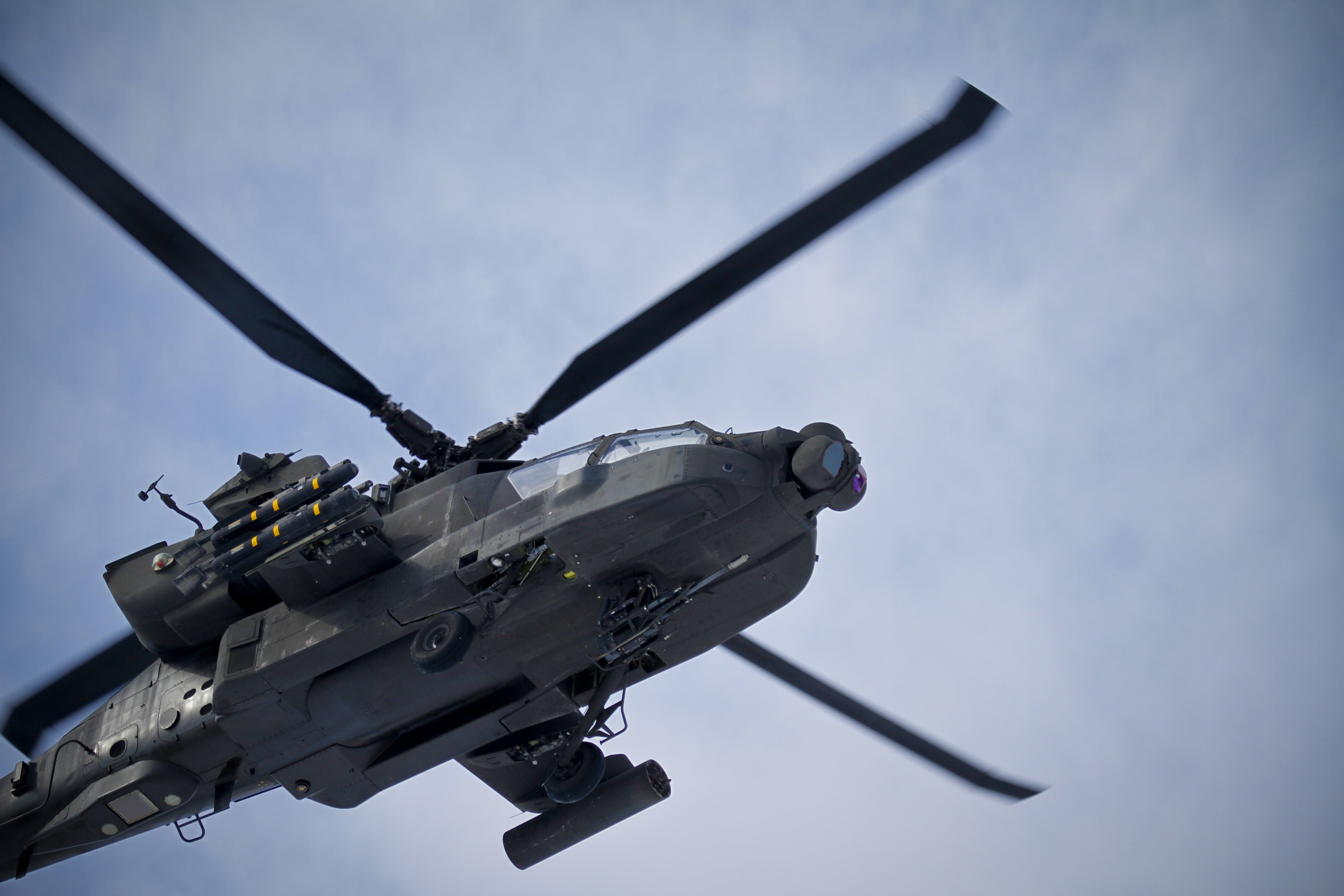2012-10-12 by Robbin Laird
Airpower is crucial to every aspect of operations in the Afghan Area of Operations, and crucial to hot pursuit of the Taliban who do not respect lines on a geographical map.
Interviews we have conducted with American and French military operators in Afghanistan have hit hard on a key theme: airpower is central to today’s operations in Afghanistan and there is a clear need to arm the Afghan allies with a functional capability along the same lines.
As Nathan Hodge of The Wall Street Journal recently put it:
The budding Afghan air force was supposed to receive $355 million worth of planes custom-made for fighting guerrillas well ahead of the U.S. withdrawal in 2014. Equipped with machine guns, missiles and bombs, those reliable, rugged turboprop aircraft are cheaper to operate and easier to maintain than fighter jets.
The Afghans won’t get the planes on time.
And Hodge went on to quote SLD’s own, the Honorable Ed Timperlake:
“They have wasted the most precious commodity they have in combat, which is time,” says Edward Timperlake, a former Marine Corps fighter pilot who served as a director of technology assessment at the Pentagon until 2009 and is now retired.
As SLD’s Murielle Delaporte, commented upon her recent return from Afghanistan embedded with the French forces:
SLD: How important is air support to the Afghans and to the French forces?
Delaporte: It is everything. It is one of the key elements and will grow in importance as the transition evolves. The French military helos will become proportionally a greater part of the force as withdrawal accelerates (i.e. remaining at approximately the same level while other units drawdown). Especially as the Mirages leave the combat theater, the role of the helos in providing air support tends to go up.
The Afghan military population has really come to appreciate air support as a key element of future success, as well as security (a Medevac ability being in particular part of any operation). One French officer told me that the Afghan helo force should become increasingly significant in enabling the Afghan security and defense forces, as the Coalition forces gradually enable them to take over.

And Major General Walters, now 2nd MAW commented upon his return from Afghanistan:
SLD: As we face transition in Afghanistan, one option clearly is to rely more on the Special Forces type of support to the Afghans against the insurgency. Your experience in many ways presages such an effort. How would your experience shape understanding from a professional military point of view of how to best support the Afghans with a Special Forces type of support?
General Walters: Our role will be to support the Afghan security forces. You’re going to have to support those guys, and they’re going to be much more distributed. You’re not going to have the battalions out there that you support people on the FABs. It’s going to have to be from a central location. And the QRF (Quick Reaction Force) is going to have to be good, and it’s going to have to be there quickly.
In the end, we have to be able to prove to the Afghan security forces that if something happens, this platoon is good enough until we get someone in there.
If you ever need more than a platoon’s worth of trigger pullers in a district center, the V22s is how you’re going to get there quickly and decisively enough to matter.
The Afghan National Army and Afghan Security Forces understand from their perspective, how important air is. We have made them big consumers.
They know that the air is there for them; they’ll go out and operate. I’ve had more than one brigade commander tell me that if it wasn’t for the medevac, it wasn’t for the resupply, and if it wasn’t for the aviation fires, he didn’t think he could get the battalions out operating like they do. Because they’ve learned that if they get hurt, we’ll fix them. They know if they run out of bullets, we’ll get them bullets. And if they’re hungry or thirsty, we’ll get them food and water.
General Mattis understood all of this when he asked for a Light Attack Aircraft to be sent to Afghanistan for the use of the Afghanis.
One of the most respected and experienced Marine Combat Generals just made a very important point directly to the US Senate. General James Mattis, Commander United States Joint Forces, told the US Senate in testimony on March 9, 2010:
“In Afghanistan, US airpower represents one of our joint force’s greatest asymmetric advantages over the enemy. The employment of air-based joint fires, used properly, will wreak havoc on enemy forces. In the fluid environment of a counter-insurgency fight, the decision to employ these joint air-based fires will come from leaders who understand that to be effective these fires must be employed rapidly and precisely against the enemy while avoiding civilian casualties. Effective employment often requires persistent observation, integrated intelligence, surveillance, and reconnaissance (ISR), and shortened approval procedures.
Our airpower is unmatched in the world, however today’s approach of loitering multi-million dollar aircraft and using a system-of-systems procedure for the approval and employment of airpower is not the most effective use of aviation fires in this irregular fight.
A Light Attack Armed Reconnaissance (LAAR) aircraft capability has the potential to shift air support from a reactive threat response, to a more proactive approach that reduces sensor-to-shooter timelines, with immediate and accurate fires, providing surveillance and reconnaissance throughout a mission, while providing communication and navigation support to troops on the ground.
Additionally, a LAAR capability can provide a means to build partner capacity with effective, relevant air support. This year Joint Forces Command will closely follow a project called Imminent Fury where the Navy and Air Force will employ a LAAR capability to reinforce our asymmetric advantage over the enemy.”

Hodge noted the why and the how of the missing planes in Afghanistan. But it is bigger than even Afghanistan.
As the U.S. looks forward to work with allies worldwide in the years to come on COIN and related operations, the U.S. will not be bringing the entire gamut of capability to the party. Working with allies in current and projected financial conditions requires a new formula: the U.S. supports allies who can fend for themselves, up to a point.
But allies likely to need COIN assistance are not in the top 10 financial giants of the global economy. And they will need and can afford what the Super Tucano can offer.
As an article by Chris Kraul highlighted:
Unsleek and unsupersonic, the Super Tucano hardly fits most people’s concept of a modern warplane. But Brazilian manufacturer Embraer is finding a growing market for the retro “light attack” propeller-driven aircraft among nations looking to secure their borders, fight drugs and support counterinsurgency operations.
Ecuador is one such customer. The two Super Tucanos that flew into Manta air base late last month were the first delivered on a 24-plane order that President Rafael Correa placed shortly after Colombian armed forces entered Ecuador’s airspace in March 2008 to kill a high-ranking FARC rebel leader, Raul Reyes.
Although the $250-million purchase was seen as a reaction to Colombia’s violation of its sovereignty, Correa in his weekly television address Feb. 6 said that the aircraft acquisition didn’t signal an arms buildup. Rather, he said, the planes were replacing Ecuador’s fleet of mostly 30-year-old A-37 Dragonfly aircraft made by Cessna.
But Correa is wrestling with a problem that the planes can help him confront: the persistent presence in his territory of guerrillas with the Revolutionary Armed Forces of Colombia or, FARC. Without specifically mentioning FARC, Correa said the aircraft would help support the Ecuadorean military as it fights “regular and irregular forces” inside the country’s borders.
(It was a Colombian air force Super Tucano that dropped the “smart bomb” that killed Reyes, then second in command of the FARC, as he slept at a camp a mile inside Ecuadorean territory.)
And the model has already been highlighted by the 12th USAF in working with Columbia: what needs to happen is to recognize this model and move ahead in global support for these types of operations with the U.S. providing its complement to those allies willing to field counter-insurgency airpower.
As Ed Timperlake emphasized:
The 12th is supporting nations just off our shore and recently held a U.S. Air Power demonstrationin celebration of 100 years of aviation in the Dominican Republic.
Unheralded success has just been achieved by this partnership between SOUTHCOM and the Dominican Republic Air Force flying the Embraer Air Super Tucano. This remarkable and replicable success is made possible by U.S. “Hi” ISR technology in partnership with the Dominican Republic “Lo” technology the Super Tucano.
It has not been widely reported that this war against drug barons is being won in the sky.
Although drug money is unrelenting in finding ways to supply their corrosive product for now in the war against narco-criminials and terrorist this is a huge accomplishment, and the opening headline from Dominican Today quoted above says it all
Along with the success in Dom Rep, the Colombian AF is wining the fight against the FARC with sensors and shooters—again the Super Tucano.
Consequently, this “Hi-Lo” mix is beginning to look like a winning formula for world wide partnerships between the U.S. and other nations by using American ISR that can give hot vectors in both the air-to-air and air-to-ground mission to a Light Armed Attack Aircraft (LAAR) like the Super Tucano.
And if we return to Afghanistan, we can underscore what a transition strategy might look like. Get the Super Tucano and C-27Js into the hands of the Afghans and let the US Army and USMC work with them in hot pursuit of the Taliban who know now geographical boundary in the region.
The US Army would highlight their role for Apaches and the USMC the role of the Osprey.
Together working together with an air-enabled Afghan force, the U.S. could continue to influence outcomes necessary in the war against terrorism and at the same time pull out most of our troops.
This would be a war winning formula, which the US Army might want to look at for its global future.


